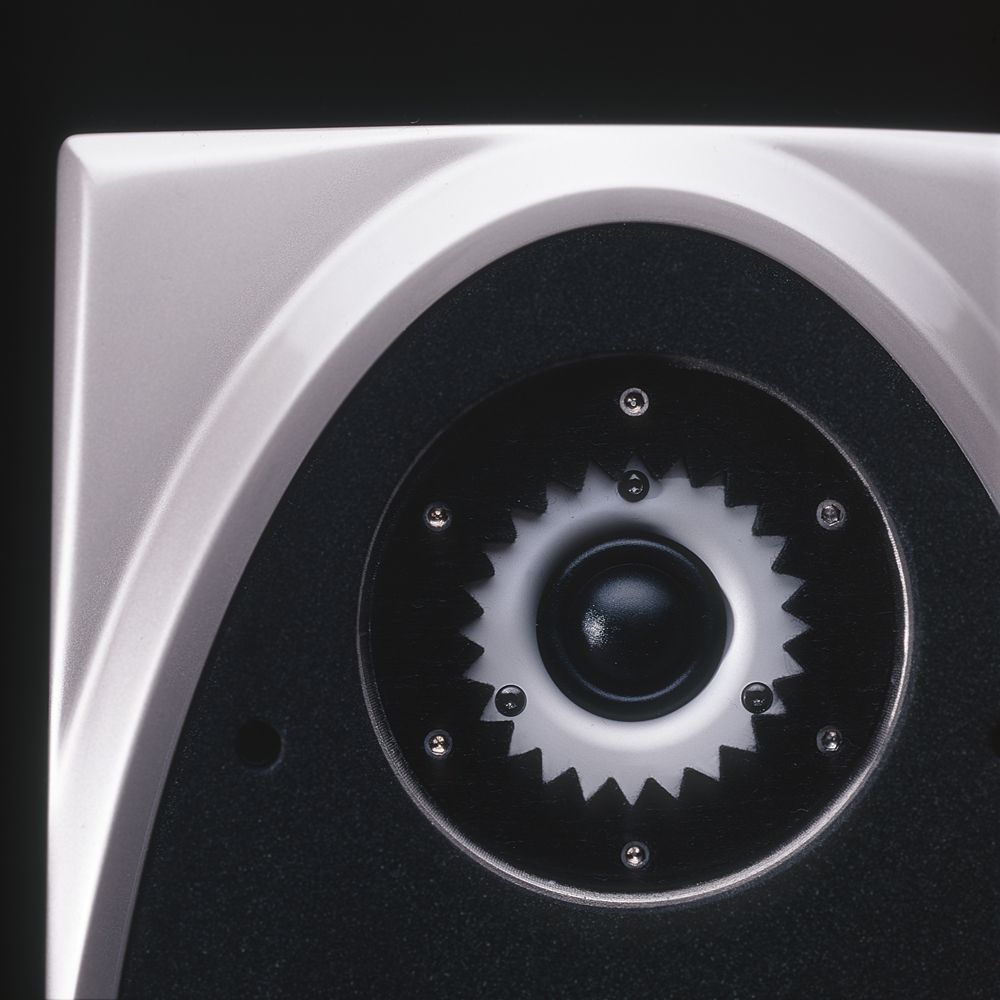



Nominal Impedance:
4 ohms, 3 ohms minimum
Woofer:
One 8 inch (19.63 cm)
Tweeter:
One 1 inch (2.54 cm)
Sensitivity:
89dB @ 1 watt (2.83V at 1 meter)
Minimum Amplifier Power:
7 WPC
Frequency Response:
+0, -3dB 36 Hz - 32.5 kHz (with port contribution)
Height:
18.4 inches (46.74 cm)
Width:
9.125 inches (23.18 cm)
Depth:
13.75 inches (34.93 cm)
Product Weight Duette:
(each) 39 lbs (17.6kg)
Product Weight Novel:
(each) 19 lbs (8.36 kg)
Approx. Shipping Weight:
(for complete system) 210 lbs (93 kg)
Taking Up the Challenge
The Wilson engineering team began with a concept: design a loudspeaker that could work in hostile sonic environments That didn't mean "work acceptably." The challenge was to create a product that would produce the signature Wilson sound in those settings: a wide, deep soundstage in which instruments and voices occupied discrete, three-dimensional space. Voices would sound real, tonally accurate, and coherent from top to bottom. Percussion would explode from a deep, grainfree background with believable dynamics and speed.
It quickly became apparent the task would require a completely "blank slate" approach to loudspeaker design.
"Blank Slate" Innovations
In an optimal sonic environment, a wide dispersion driver is considered a good thing. But in order to minimize diffraction, Duette needed specially designed controlled-dispersion drivers.
In order to preserve proper Propagation Delay in a hostile environment, it meant the separate crossover, connecting cables, and the driver alignments had to account for near-boundary reflections. To fine-tune Propagation Delay for specific listening distances and heights, an ingenious set of spikes in three sizes magnetically attach to the side or bottom of Duette.
The Other Side of Duette
Instead of taking a loudspeaker designed and voiced for optimal room placement (with plenty of air behind and beside the speaker) and then trying to force it into a "bookshelf" mode, Wilson's engineers did the opposite; they designed Duette from the ground up as a "hostile environments" loudspeaker.
But what if you want to use Duette on its custom stand as a typical floor-standing system? Not a problem. Change the tweeter resistor on the external crossover, change the custom speaker cables which connect the crossover to the speaker, and Duette is transformed into a compact, two-way stand-mounted system tuned to a "far boundary" room.
Another possibility: you want Duette on its stands in a room too small to place speakers away from wall boundaries. Just configure Duette to its "near boundary" mode and place the stands against the wall.
Custom Cabinet Installation
Custom cabinets are typical of home theater installations and also as a way to integrate music systems into room decor. Until now, dealers and customers have been faced with two-less-than-ideal choices: use inferior "in-wall" speaker systems or try to make a high-end speaker system work where it was never designed to go. Duette ends this "Hobson's Choice" dilemma by bringing high-end sound into the custom cabinet environment.
Duette's Crossover: Thinking (literally) Outside the Box
There are two reasons Duette has an external crossover. The first is a practical consideration of weight and volume. Crossover design lies at the heart of the Wilson Audio sound. Each crossover, whether destined for Duette or Alexandria, is hand-wired using custom capacitors and even custom solder. They are, of necessity, large and heavy. To keep Duette's size and weight appropriate for its varied applications, it was quickly apparent it made sense to house the crossover in a separate module. There was another more compelling engineering reason to do so: In an enclosure the size of Duette, the proximity of a crossover to the drivers would make the circuits susceptible to mechanical and electromechanical feedback from the drivers, introducing subtle yet audible distortion. At Wilson Audio, the size of a speaker is irrelevant to the care given to its design and manufacture.
Special Applications Engineering
Special Applications projects have a long and illustrious history at Wilson Audio. In 1983, Dave Wilson needed a small location monitor for the series of audiophile-acclaimed classical music recordings he was doing at the time. Finding nothing suitable on the market, he went into his garage and built the original WATT. Its truncated pyramid shape, constructed from mineral-filled methacryllic, broke the mold of then-current loudspeaker design and has been widely copied since for one reason: it works extremely well. Mated to its dedicated woofer enclosure, the WATT/Puppy continues to be Wilson Audio's longest running and best-selling loudspeaker.
With the advent of home theater, Wilson Audio was unwilling to simply jump into the market with "me-too" products. We chose, instead, to wait until the engineering team understood the problems well enough to offer solutions that were unique and groundbreaking. The WATCH Center Channel, WATCH Dog Subwoofer, and WATCH Surround speakers all offer Unprecedented performance and value in high-end home entertainment systems.